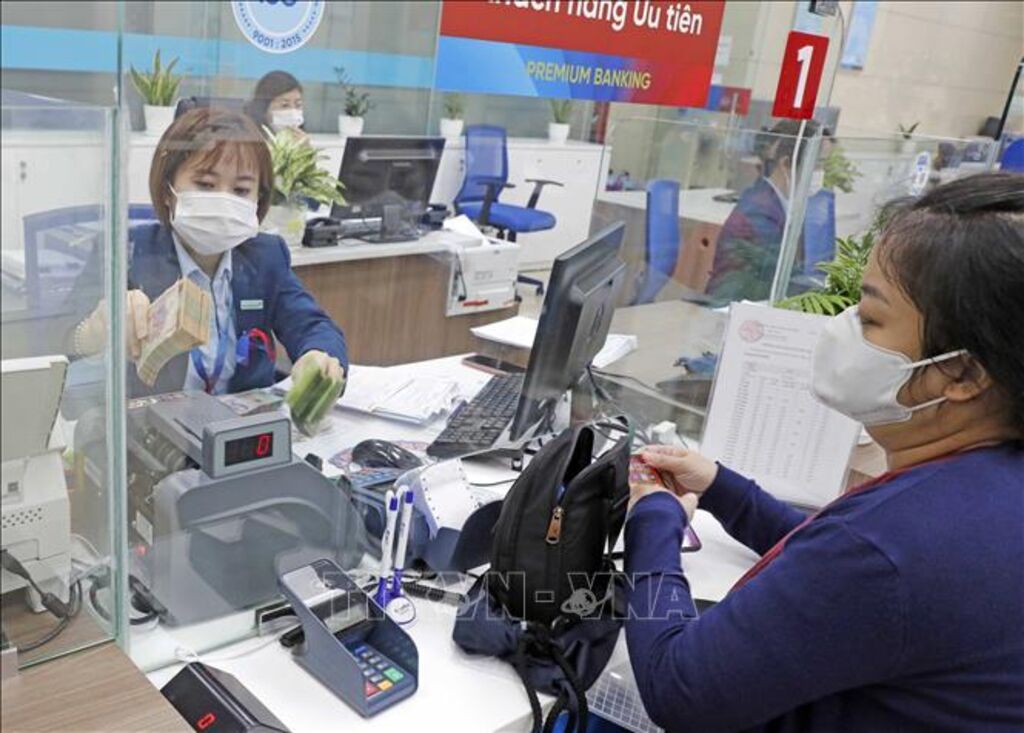 |
| Transactions at VietinBank Ba Dinh Branch in Hanoi__Photo: Tran Viet/VNA |
The State Bank of Vietnam (SBV) has issued a circular introducing capital buffers and stricter dividend conditions and allowing the use of the internal rating-based (IRB) approach.
Effective as of September 15, 2025, and superseding Circular 41 of 2016, Circular 14/2025/TT-NHNN dated June 30 specifying capital adequacy ratios (CARs) for commercial banks and foreign bank branches marks a crucial advancement of Vietnam’s banking system toward standards of Basel III set by the Basel Committee on Bank Supervision, allowing for a more targeted credit growth in the coming period.
The Circular guides how to determine the minimum value of CAR that banks need to maintain, including the Common Equity Tier 1 (CET1) ratio, Tier 1 capital ratio, and the minimum total CAR. It also provides capital buffers, including the capital conservation buffer (CCB), the countercyclical capital buffer (CCyB), and capital buffers for important commercial banks in the banking system.
Accordingly, the minimum CET1 ratio is raised to seven percent and the overall CAR including the CCB must reach at least 10.5 percent. The CCyB mechanism is designed to be flexible, ranging from zero percent to 2.5 percent, depending on economic conditions and the credit cycle.
Apart from CAR, banks are required to maintain the CCB ratio. Only when this buffer is maintained may banks be permitted to distribute remaining profits in cash, including cash dividends to shareholders.
The Circular also provides guidance on how to calculate credit risk-weighted assets using both the standardized approach and the IRB approach. The standardized approach referred to in this Circular is similar to the method currently applied by banks under Circular 41 with some adjustments for real estate exposures and specialized lending.
It also guides the calculation of total customer credit risk-weighted assets based on the IRB approach, classification of customer credit risk-weighted assets, methods of determining elements for calculation of customer credit risk-weighted assets for each type of asset, and specifies minimum requirements for the IRB approach.
From September 15, banks will have the right to register for applying either the standardized approach or the IRB approach for credit risk to calculate CARs. From January 1, 2030, all banks that have yet to register for applying the standardized approach or have yet to be approved by the SBV for applying the IRB approach will be required to calculate CARs using the standardized approach as specified in this Circular.- (VLLF)









